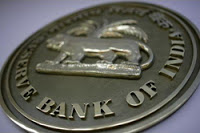Functions of Reserve Bank of India
Issue of Notes
One of the main functions of Reserve Bank of India it that has the monopoly of note issue in the country and it has the sole right to issue currency notes of various denominations except one rupees notes. The Reserve Bank act as the only source of legal tender money because the one rupee note issued by the Ministry of Finance are also circulated through it. The Reserve Bank has adopted the Minimum Reserve System for note issue. One of the main functions of Reserve Bank of India since 1957, it maintains the gold and foreign reserve of Rs. 200 crore, of which at least Rs. 115 crore should be in gold.
Don’t Miss: Methods Used By Rbi To Control Supply Of Money
Banker to the Government
The second important functions of Reserve Bank of India is to act as the banker, agent, and adviser to the Government. It performs all the banking functions of the State and the Central Government and it also tenders useful advice to the Government on matters related to economic and monetary policy. It also manages the public debt for the Government.
Bankers’ Bank
The Reserve Bank performs the same function for the other banks ordinarily performing for their customers. It is not the only banker to the commercial bank, but it is the lender of the last resort.
Also, Read: Fiscal Policy
Controller of Credit
One of the most important functions of Reserve Bank of India is that it undertakes the responsibility of controlling credit created by the commercial banks. To achieve this objective it makes extensive use of quantitative and qualitative techniques to control and regulate the credit effectively in the country.
Custodian of Foreign Reserves
For the purpose of keeping the foreign exchange rates stable, the Reserve Bank buy and sells the foreign currencies and also protect the country’s foreign exchange funds.
Read Also: International Monetary Fund (IMF)
Other Functions
The bank performs a number of other developmental works. These works include the function of clearing house arranging credit for agriculture (which has been transferred to NABARD), collecting and publishing the economic data, buying and selling of Government Securities and Trade Bill, giving loans to the Government, buying and selling of the valuable commodities etc. It also acts as a representative of Government in IMF and represents the membership of India.
Related Posts:


